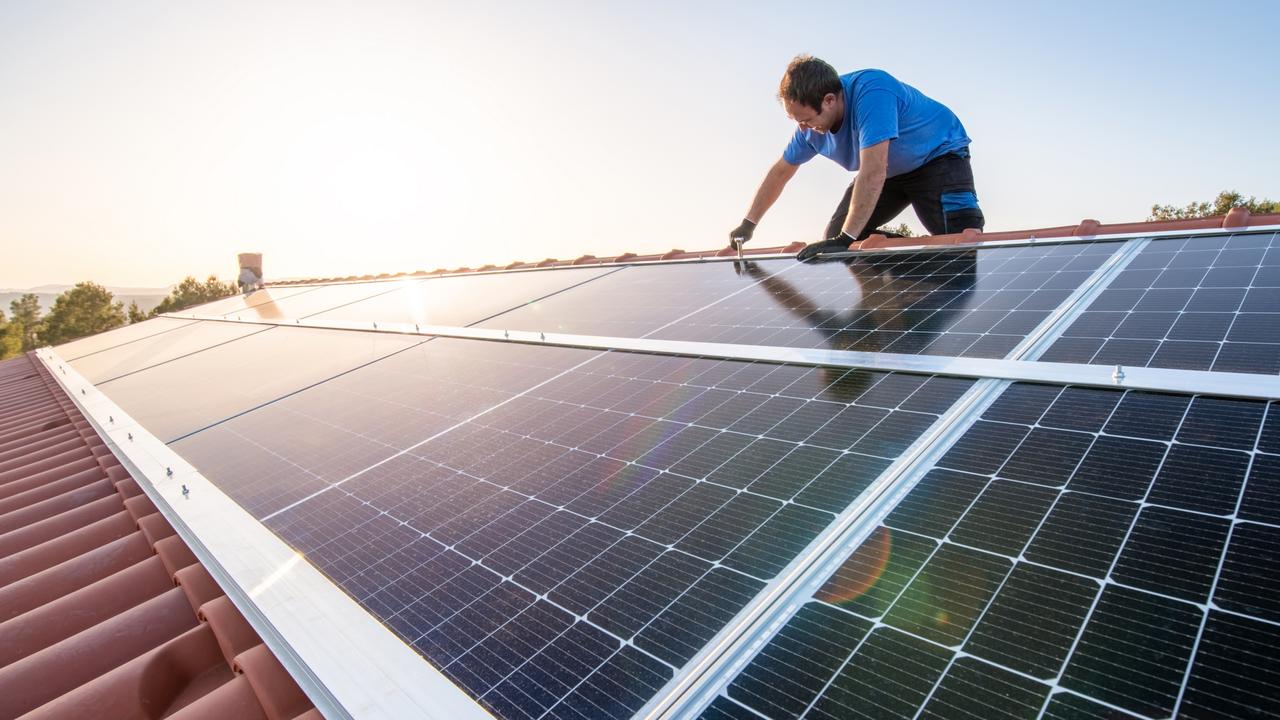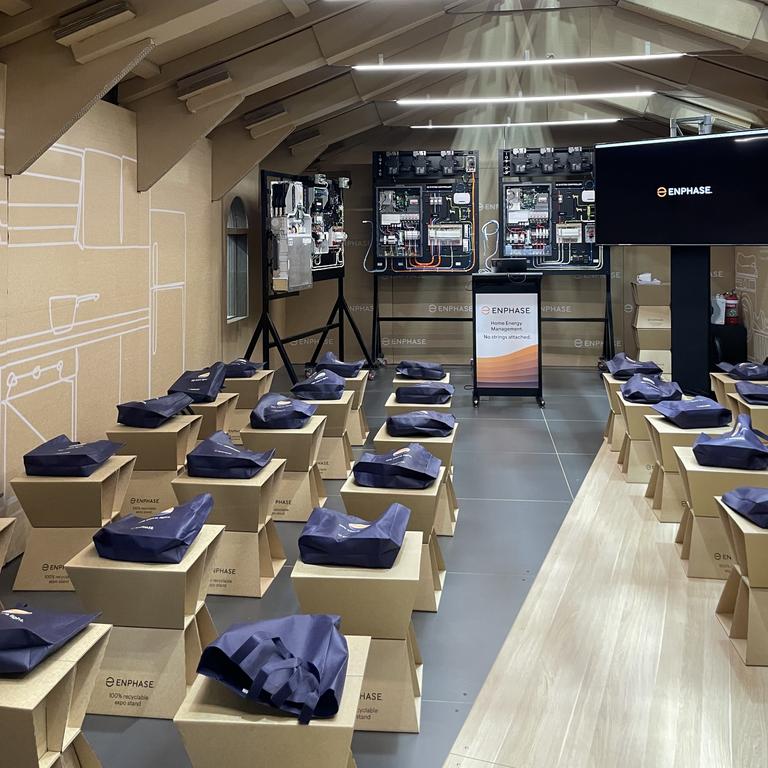Energy-efficient homes: Victoria falls behind rest of the country installing solar panels
A Block contestant turned real estate agent has revealed many buyers want homes with solar panels. But they’re missing a critical follow-up that could leave them thousands of dollars worse off.
Just 770,000 Victorian households have installed rooftop solar panels since 2001, with the state lagging behind NSW and Queensland despite soaring energy bills.
Celebrity Melbourne real estate agent and former The Block contestant Jesse Raeburn is now calling for the state to make itself the national capital of home solar power, and for homebuyers to start asking more questions about solar panels to avoid missing out on thousands of dollars in energy bill savings.
RELATED: Hunt is on to find 83,000 workers to reach 2029 housing goal
Vic homeowners paying near-record sums to overhaul their properties
Horse farms home to Melbourne Cup champions for sale from $3m
Melbourne is this week hosting the nation’s largest gathering of renewable energy professionals at the All Energy expo, which Raeburn is involved in as a home renovator and solar power spokesman.

Despite hosting the conference, Victoria is languishing behind NSW and Queensland where more than a million property owners have installed a renewable energy system.
It’s also being outpaced by South Australia and Queensland in terms of the highest number of solar panels per household, despite Melbourne being home to higher typical energy bills than those in Brisbane.
Mr Raeburn said while Queensland was the capital for solar panels, hot climates weren’t necessarily the best for their operation with reduced efficiency when they reached certain temperatures.
“I think Victoria should be the nation’s solar capital,” he said.
Mr Raeburn now renovates homes on the side as well as selling homes as an agent and said while most homebuyers and would-be renovators he spoke with asked about solar panels, almost none asked follow up questions about what type or their age.
“Not all solar panels are equal; some have better performance, longevity and safety,” Mr Raeburn said.
“More than half the buyers ask if a home has solar panels, particularly when you are selling them a big home.
“But not many are asking about the age of the solar system, and they probably should be. So we do have room to improve.”
Enphase Australia general manager Patrick Matweew said based on population size Victoria should probably be higher up the list.

His firm is the nation’s largest provider of solar technology in Australia and has established a life-size recyclable cardboard house for the All Energy convention at the Melbourne Convention and Exhibition Centre.
Mr Matweew noted that while Victoria had more cloud cover across a year than some other states, lower temperatures here did provide potentially better conditions for solar electricity generation, with diminishing returns once surface temperatures reached 80 degrees.
However, he noted that Victoria’s slower uptake of solar could yet prove beneficial, as modern panels would come with better longevity and efficiency than older models.

Mr Matweew said the earn out time for many solar panels was about 4-6 years, depending on a household’s size and energy use.
He said most solar technologies took about four to six years to pay for themselves in energy bill savings, depending on a household’s size and energy habits.
While Mr Raeburn said there was an average 10-year warranty in the industry, but some providers offer 25-year coverage.
“If you have a 10-year warranty and it fails shortly after and it took you five years to pay it off, that’s not ideal,” he said.
More simplistic, and often cheaper, solar panel arrays operate in a line with all of their energy going through an inverter at the end of the chain, but if one panel fails or is impacted by shade it can cause significantly reduced energy production for the whole system.
Mr Raeburn said he now prioritised panels with microinverters that convert the energy from each solar panel to electricity usable within the home were able to maintain peak performance even if the array was partially shaded by clouds or trees.
Sign up to the Herald Sun Weekly Real Estate Update. Click here to get the latest Victorian property market news delivered direct to your inbox.
RELATED: QIC puts Melbourne’s Woodgrove mall on the block
Next step for demolished CBD building after six-year saga
Serial Block buyer’s surprise new side hustle
Originally published as Energy-efficient homes: Victoria falls behind rest of the country installing solar panels



